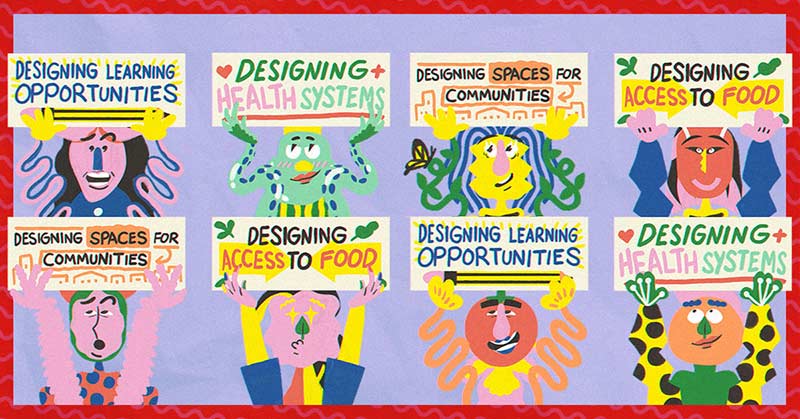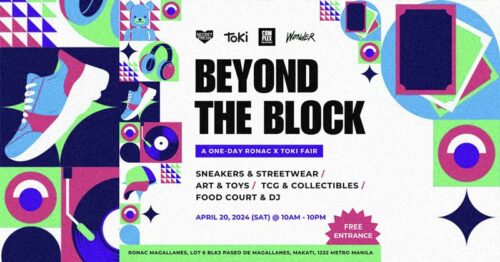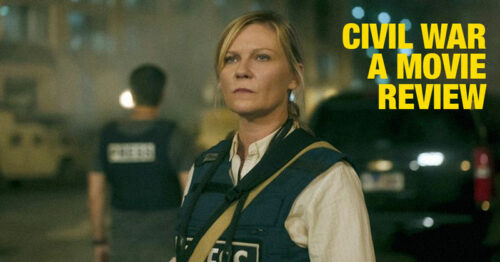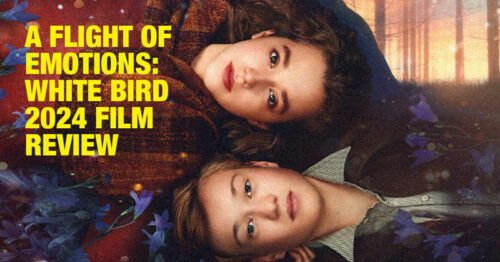How might we work from hope as we work from home?
What does bayanihan look like in 2020?
And a Half, along with their keynote speakers, addressed this during Social Problems Are Design Problems: A Conversation on Designing the Future Philippines, an interactive online event, which happened last October 9. With design initiatives like Help From Home, a proactive response to the pandemic earlier in the year, the independently-owned design firm caters to finding real solutions through the use of (good) design.
Design thinking should penetrate the many decisions we do in life. How do we use design as a tool to push boundaries and communicate empathy especially amid a global health and economic crises? And how do we adapt to the times based on the needs of our own communities? Let these brilliant minds show you how.
RELATED: Is Social Distancing The Future of Work?
Tetel Cuevas on Public Health and Designing Health Systems
How might we engage all members of society to participate in the COVID-19 public health response?
Deployed to isolated areas in the country as a Doctor to the Barrio—a program created by the Department of Health to address the lack of doctors practicing in rural communities—Tetel Cuevas faced unique challenges in the locality at the onset of COVID-19. She posed this question: How do you set up a community, disadvantaged and constrained in so many ways, for success against a very unknown enemy?
This was her fuel behind co-creating programs in the time of a pandemic, knowing full well that she had to take into consideration issues such as lack of resources, budget constraints and limited services present in the community she served. In time, she helped implement programs such as the Lanuza Community Educators, a group of volunteers who delivered relevant facts and hygiene practices to every household amid the pandemic, and the Nipahol Foot Dispenser, an ingenious tool to maximize available resources—the nipa palm—in the locality, which also provides means of employment for members of the community.
Celina Borromeo on Food Security and Designing Access to Food
How might we create an ecosystem to improve the quality of life of all citizens of our country?
The idea of Gising Gising is rooted in sharing, according to co-founder Celina Borromeo. Having reliable access to nutritious food is essential, so she and her partners helped create a tangible means to fight food insecurity in the Philippines. How do you even bridge the gap between the supplier and consumer, especially for urban poor families who have suffered heavy losses amid the pandemic?
Gising Gising disrupts the traditional supply chain by selling fresh vegetables directly sourced from local farmers through a convenient and sustainable platform. For each curated box sold, another is also donated to feed a family in a low-income community. The website has proven to be effective, reaching more customers than a physical store could.
Jaton Zulueta on Learning and Education and Designing Learning Opportunities
How might we work from hope as we work from home?
When the pandemic emerged, Jaton Zulueta, executive director and founder of AHA! Learning Center, was faced with a setback. They had to close their centers for after-school learning. This ecosystem, which offered support for low-performing but high-potential public students, had to adapt to online learning but there was a problem: most of these students had no means to go online. How can you be there for a community when most of them have no access to the internet? Their communities shifted into households, turning all interactions virtual via the free Facebook Messenger app.
Eskwelang Pamilya is AHA!'s ingenious approach to conduct online classes through a free text-based Facebook school for public school kids in the time of COVID-19 with lessons on COVID, games, wellness, reading and more. With the help of DepEd NCR, Department of Health, the Office of the Vice President and hundreds of strategic partners, they have trained almost 50,000 teachers and taught almost 17,000 students. If there's one thing Jaton learned from this undertaking, it's to create change that actually reaches communities—meet them where they are.
Arts Serrano on Public Space and Architecture and Designing Spaces for Communities
How might we co-create with our communities for the development of spaces that are empathic and contextualized, not consumptive?
As lead architect and partner of the award-winning One/Zero Design Collective, Arts Serrano is one of the key figures responsible for regenerating Escolta. With continuous efforts, one of the oldest cities in Manila is now a thriving hub for young artisans and businesses, a perfect example of how geography can perfectly be integrated to design. Through this revival, a new generation can feel more connected to Manila and its rich history and collective identity.
Moving forward, he, along with his collective of talented architects, designers and urban planners, want to revitalize heritage buildings, generate communal growth and increase local microeconomy. They are also in the process of exploring the future of spaces in the context of the post-pandemic world.
Watch the full Design Talks on YouTube.
Header Design And A Half
Art Matthew Ian Fetalver


















